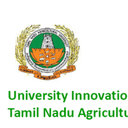Anti cancer activity on Graviola, an exciting medicinal plant extract vs various cancer cell lines and a detailed computational study on its potent anti-cancerous leads.
Keywords
Abstract
Nature is the world's best chemist: Many naturally occurring compounds have very complicated structures that present great challenges to chemists wishing to determine their structures or replicate them. The plant derived herbal compounds have a long history of clinical use, better patient tolerance and acceptance. Their high ligand binding affinity to the target introduce the prospect of their use in chemo preventive applications; in addition they are freely available natural compounds that can be safely used to prevent various ailments. Plants became the basis of traditional medicine system throughout the world for thousands of years and continue to provide mankind with new remedies. Here, we present a research study on a medicinal plant, Graviola, a native of North America but rarely grown in India. It has a wide potent anticancerous agents coined as Acetogenins which play a key role towards many varieties of cancer, Acetogenins are potent inhibitors of NADH oxidase of the plasma membranes of cancer cells. Potent leads were taken for the study through literature survey, major types of cancer targets were identified, the natureceuticals and the cancer protein were subjected to docking analysis, further with the help of the dock score and other descriptor properties top ranked molecules were collected, commercial drug was also selected and identified as a Test compound for the study. Later, the phytochemicals were subjected to toxicity analysis. Those screened compounds were then considered for active site analysis and to find the best binding site for the study. R Programming library was used to find the best leads. Phytochemicals such as Anonaine, Friedelin, Isolaureline, Annonamine, Anomurine, Kaempferol, Asimilobine, Quercetin, Xylopine were clustered and the highly clustered compounds such as Annonamine , Kaempferol termed to be a potential lead for the study. Further study on experimental analysis may prove the potentiality of these compounds. In the experimental analysis, Graviola leaves were collected, and the extracted components were tested against the HeLa cell line and PC3 cell line. HeLa cells treated with 75 μg of a crude leaf extract of A. muricata showing 80% of cell inhibition. Further investigation of other experimental studies may confirm that these potential lead could make a great impact in which it could help to accelerate the pipeline of drug discovery.



